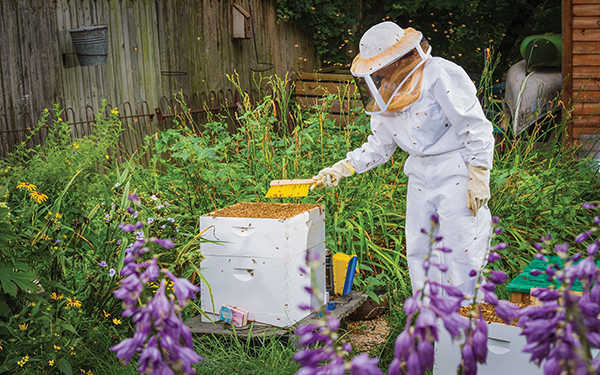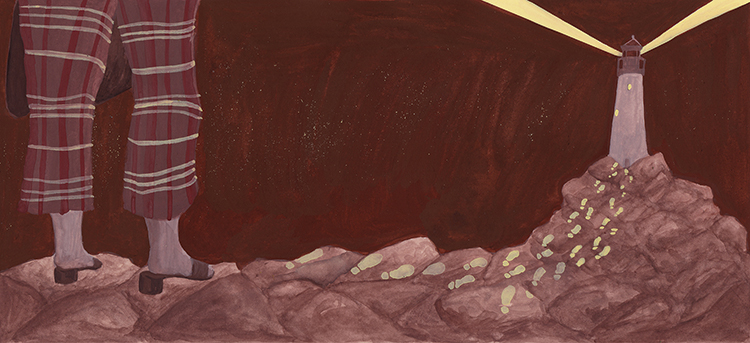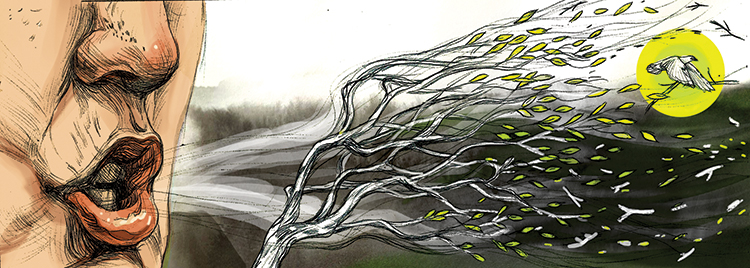Photo by Addison Geary
Hive Mind
by Anna Herman
Most humans are cheered by spring flowers. For all the pollinating insects, these blooms are a lifeline after the nectar- and pollen-free winter cold.
Honeybees and many native bees keep the foods we love—fruits, veggies, nuts, milk and even ice cream—flowing to our tables through their pollination services. Butterflies and native bees are also harbingers of the health of our local ecosystems.
And then there is the honey!
Bees thrive in a city full of flowering trees, backyard gardens and pocket parks. Even if you’re not ready for your own hive, urban gardeners have an important role to play. You can provide food and shelter in the form of native plantings in yards, vacant lots and parks to help butterflies and bees multiply and thrive. Penn State Extension (for which I work) has a useful online guide to help your efforts to both learn what plants to add to your community and what garden practices help pollinators flourish. Certify your garden as a “Pollinator Habitat” this spring.
As a beekeeper, you can help create a healthy habitat for 30,000 to 80,000 honey bees per hive, and studies have shown that urban bees often have a more varied diet—and fare as well or better—than their suburban or rural counterparts.
Taking care of a couple of backyard hives shifts how one views the world. Beekeepers see dandelions as food for their bees, not as weeds. Beekeepers see pesticides on the shelf of every hardware and big-box store and mourn the death of these crucial partners. Beekeepers see the barely discernible blooms on the maple trees in March and know honey is on its way in June.
The care and keeping of bees requires knowledge and hands-on practice. Honeybees have a fascinating cooperative social structure with tens of thousands of female workers building perfect hexagonal wax chambers to house their young and store their food. Foraging bees return to the dark hive box and share information to guide their sisters to nectar sources up to two miles away by waggle and circle dancing. And the episodic off-site mating rituals are something of a marvel.
Considering keeping bees this spring? Join a beekeeping class to weigh the many options and determine what equipment and style of beekeeping you might pursue. You can order bees by the 3-pound box or starter (nucleus) hive. Pick them up at several local spots later this spring, or have them delivered in a screened box.
Philadelphia today boasts hundreds of backyard and rooftop hives, and the city has a long tradition of innovation and support of beekeepers. Early beekeepers would have to destroy much of the colony to harvest honey. But in 1852, Lorenzo Langstroth, a Philadelphia native, patented what has become thestandard beehive.
The stacked boxes of the Langstroth hive are the image that likely comes to mind when you think “beehive.” This hive allowed the bees to build honeycomb into frames, which can be easily moved, but that prevented bees from attaching honeycombs where they would connect adjacent frames or connect frames to the box. The movable frames allow the beekeeper to observe and manage their bees in ways that had been impossible. Modern beekeepers choose among variations on the Langstroth hive, Warre hives and various sorts of “top bar” hives. Each has advocates who enumerate the pros and cons of honeybeehealth and utility for the beekeeper.
The Philadelphia Beekeepers Guild is a great resource of volunteer beekeepers who share knowledge and information in monthly meetings and offer classes, in-person and online resources, group equipment orders and hands-on meetup opportunities.
Whether you set up two hives on your patio, plant more flowers, or purchase local honey, you can—and should—take on a role in protecting pollinators. Sweet.
Anna Herman is a garden educator who raises chicken, ducks, bees, fruits and veggies in her Mount Airy backyard.
The Beekeeping Glossary
Excerpted from The Practical Beekeeper, with edits from Michael Bush
Apiary = A bee yard
Apiarist = A beekeeper
Apiculture = The science and art of raising honeybees.
Beeswax = A substance secreted in thin scales by special glands on the underside of bees’ abdomens used after mastication and mixed with the secretions of the salivary glands for constructing honeycomb.
Colony = The aggregate of worker bees, drones, queen and developing brood living together as a family unit in a hive or other dwelling.
Comb honey = Honey left in the soft white wax comb that is used for consumption.
Drone = The male honeybee that comes from an unfertilized egg, laid by a queen or, less commonly, a laying worker.
Frame = A rectangular structure of wood designed to hold honeycomb.
Hive = A home for a colony of bees.
Honey = A sweet viscous liquid produced by bees from the nectar of flowers, composed largely of a mixture of dextrose and levulose dissolved in about 17 percent water; contains small amounts of sucrose, mineral matter, vitamins, proteins and enzymes.
Pollen = The dust-like male reproductive cells (gametophytes) of flowers, formed in the anthers, and important as a protein source for bees; pollen is essential for bees to rear brood.
Propolis = Plant resins collected, mixed with enzymes from bee saliva and used to fill in small spaces inside the hive and to coat and sterilize everything in the hive. It has antimicrobial properties.
Queen = A fully developed female bee responsible for all the egg laying of a colony.
Raw honey = Honey that has not been finely filtered or heated.
Swarm = A large or dense group of bees led by an old queen bee that leave a hive to start a new colony. Swarms are generally calm and unthreatening as they have no home to defend.
Top-bar hive = A hive with only top bars and no frames that allows for movable comb without as much carpentry or expense.
Worker bees = Infertile female bees whose reproductive organs are only partially developed. They are responsible for carrying out all the routine of the colony.









